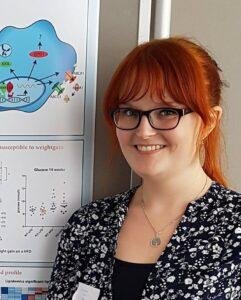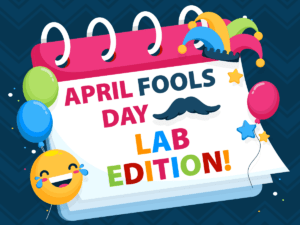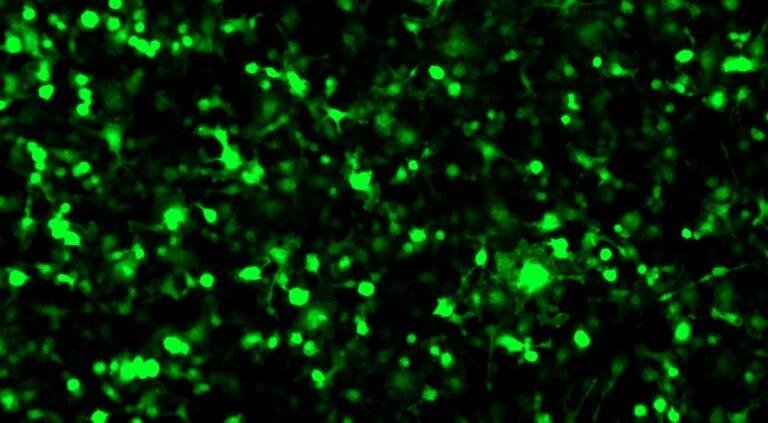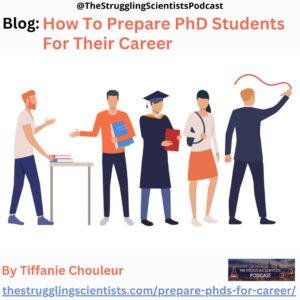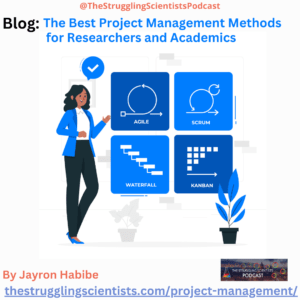Powered by RedCircle
Listen to us on
We all know that sometimes experiments fail. Sometimes the results are not what you were hoping for, or something goes wrong. Infections in cell culture are a disaster that haunt most Scientists nightmares. It’s all part of our sometimes-frustrating job. You learn to deal with the setbacks and come back the next day with a fresh mindset. My colleagues have many times impressed me with the resilience you so need as a Scientist.
BUT! Sometimes you have these experiments that just…… are cursed. And this is the story of one of those Cursed Experiments that will forever haunt me. But thank all Science gods it has a happy ending.
It all started out with a very interesting project. In primary bone marrow derived macrophages isolated from mice we had measured a very interesting lipid profile effect that we thought we might know the mechanism behind. I was super excited about this project, and still am, since it was something that I discovered myself! And to get the chance to investigate something completely yourself is the dream of every PhD student (or at least mine). So full of excitement I was ready to start the next set of experiments that we had planned to proof that our mechanism was indeed correct. And that was were the first problem arose …..
Our plan was to take these bone marrow-derived macrophages and make knockdown and overexpression cells. These cells we would then use to measure the lipid profile. To do this we needed to work with viruses that infect the macrophages and start either knocking down (with shRNA) or induce an overexpression of our gene. Now normally in our institute we have this nice database of shRNA constructs that you can just search for your gene and get the constructs ready to go. And before this cursed experiment and since then every gene we have searched for are in there. But of course not this time…. my too obscure gene was not available…..
So that made it a lot more work, but no problem we can work around that. So I learned how to design shRNA constructs, made 4 of them and without too many problems (surprisingly) I managed to make my own constructs and then virus. I used a nice pLenti plasmid recommended by a colleague that if I used a specific entry plasmid would even add a GFP tag to my shRNAs! What more can a researcher want then nicely fluorescent cells to know your experiment is working. However it did not work….. Somehow these viral constructs even though they were correctly put together just did not produce nice virus that could transfect cells. Not even easy cells like hek293T. We tried many many things to get them to work but there was just something wrong. So back to the drawing board it was.

And then Corona happened….. In writing down everything that went wrong with this experiment I almost forgot about this one. I might be in denial… So we spent some time at home and the work on this project/experiment stopped for a while. Luckily, we were able to work on odd hours quite soon again and we could slowly start things up again. As long as we made sure to keep the amount of people in the lab to a minimum. So back to work we went…
I learned that a different colleague of mine was using pLenti X1 GFP plasmids and recommended these. However, to use these I needed to start all over with the cloning since I needed to take out the GFP tag that I had attached to the shRNA’s since the plasmid already contained a GFP. But I was not deterred and started cloning again with positive energy. I even got some help from a technician that I will call M. She had experience with these pLenti X1 constructs and working with viruses and slowly we started working together on this project. After again a couple of weeks of cloning we managed to make my constructs again. However, sequencing them was a complete disaster. It took me a bit to figure out that the hairpin structures that are so characteristic of shRNA’s made it impossible to sequence the complete shRNA. The trick was to add some betaine to denature the DNA a bit. In the end a simple solution but as so often in Science it takes you way too long to figure this out…
In the meantime, M and I were also cloning the overexpression constructs. I had designed some nice tags on each side of my protein to make sure I could check if localization was altered by the tags and cloned them together in pLenti constructs. At this point I really got this cloning thing down! And luckily, I actually really like doing this and find real enjoyment out of the process of designing these proteins and how you want to make them/tag them. The best part of the process is when you then actually make them and let your ideas come to life in the most literal way in cells. So despite all setbacks so far I was still a happy Scientist really enjoying working together with M and now with 4 working knockdown and 4 overexpression constructs. Now all that was left was to get it into the cells right? RIGHT??

Now anybody who has worked with macrophages know that they are not the easiest cells to work with. And they are notoriously hard to transduce (the process of getting the virus into the cells. Macrophages are immune cells that are trained in getting rid of pathogens. And they do exactly the same to the so carefully made viruses. In literature there are some papers of people that made it work but it was just not working for me. Our backup plan was to use a cell type that was a bit easier to transduce but since we had measured our original effect in these cells it would really be better to get this working in the bone marrow derived macrophages. I tried countless protocols but my cells remained unfluorescent and untransduced.
Now I had my own random idea that had been shot down by my PI already a couple of times because of technical difficulties. So of course….. I did it anyway. And it worked!!!! I really could not believe it. It had to be a fluke. My cells were fluorescent green! How did this happen?!? Now one time is of course no proof. So I tried it again, trying very very hard to not get my hopes up. After months of trying this random idea could really be the solution to everything? But it worked again! I don’t think I have ever shown so many pictures of green cells during meetings. In these days everybody learned that me yelling THEY ARE GREEN was a good thing. And then when I had to optimize my protocol to get the dose and timeline correct I think I drove my colleagues crazy with talks about cells that were just slightly greener then other cells. Now if you are interested in this amazing protocol to transduce bone marrow derived macrophages keep your eye out for my next paper 😉 coming soon to a journal near you..) The only major downside to the protocol is that every experiment form beginning to end took at least 3 weeks of work for M and I… and that was off course only if I worked 7 days a week to make sure that everything could happen in a nice sequence. But that was fine! I had the amazing help of M and had finally figured out how to do this. I was getting nice results! I could give up on a few weekends to make this happen! On top of that this was going to be the experiment that would make or break the whole project. The pressure was on to make this work asap!
After almost a year from first designing the shRNA constructs, we were now able to make some really nice overexpression and knockdown cells and we had a meeting with the lipidomics department to make agreements about what measurements we wanted to do on these cells. It was now December and my Pi thought that by the end of January we would have everything optimized and ready to do the experiment. After all, all I still had to do was optimize the amount of virus per cell. That was one more 3-week experiment after Christmas and then we were ready!
Now I kept working a few days during Christmas break to make sure that after Christmas we had everything ready for the last optimization experiment. I did take one week off because skipping all those weekends was beginning to weigh me down. After my short holiday M and I started again with making virus and 3 weeks later we had the results. But…. my cells did not look so nice and fluorescent green as they did before….. We probably had less good virus this time. Since it needed to be made fresh every time there could be some differences in amounts and this time it just did not work so well. So we just did it again… and again it did not work well… WHAT WAS GOING ON?!? This was working so well before my holiday! It was super consistent! And we changed nothing! Ok after thinking about it some things were different. We were working with a different batch number FCS. And we were noticing some of the HEK293T cells dying after normal plasmid transfections (no virus). So something was going on. And wasn’t the medium not turning yellow a bit sooner then normal? In hindsight it was not, but you turn into a real conspiracy theorist trying to figure out why a protocol is suddenly not working XD.

We started testing if using the old batch of FCS made a difference. But it did not help. We were again a few weeks further along and it was still not working. It was March by now instead of the end of January that we had planned with the lipidomics department. So the pressure to figure out what was going on was on! What else did we change during of just after Christmas break??
We had defrosted a new batch of HEK293T cells to make the virus in. But we had defrosted different ones before and it was never a problem. These even looked better because they were an earlier passage number. The lab manager had specifically defrosted them to make sure we were all working with good cells. BUT we did keep having these problems. And we also noticed that the cells died sometimes (definitely not all the time) after transfection. You know what, I still have a frozen vial of the exact cells we were using before Christmas. They might have a later passage number but let just try them. At this point M and I were just testing everything.
And… it worked …. to make a long story short. It turned out that the lower passage number of cells could not handle the PEI we use to do transfections and make virus for longer than 5 hours… While we were leaving it on overnight since that had always worked fine. And even when using 5 hours the younger cells just produced less virus. Who would have thought that there would already be such a difference in HEK cells in one lab! In the end we decided to go back to the slightly older HEK cells from before Christmas. We had already wasted 3 months of our time with this very stupid problem and from now on we were not changing ANYTHING!!!
So things were working again, my macrophages were getting green again and I managed to optimize the amount of virus. Now keep in mind that it was now April. And ever since January I was often working too many days a week again. Every time with the idea that this time would be the experiment that would make everything work again. BUT! Now things were working again! So this time…. yeah you know how it works. I was overworking myself. I tried to plan things with M so that I could work the weekends but take at least one day off a week. It was far from ideal since some days were still filled with meetings even though I called it ‘my free day’. It got to the point that even my PI started asking if I was doing ok….. Well then you must be in a dire state XD.
But it really did not matter. I could finally start the big experiment for lipidomics that I was working towards for more than 14 months! It was a gigantic experiment in the end since a lipidomics measurement needs a lot of cells to work. With more than 30x 15cm plates of HEK293T cells to make virus and 55x 10cm dishes of macrophages we decided to split the experiment in two to make it more doable. First the overexpression cells with its own control, and then the knockdowns with the correct control. I decided to start with the overexpressions since this was the smaller part with only 15x 10cm dishes of macrophages.
The overexpressions worked quite well, apart from a miscommunication between M and I almost messing things up! That is what happens if you try to take a day off XD. Luckily, we managed to clear things up with some panicked weekend calls (sorry again M for bothering you in the weekend!) and staying the entire weekend for some experiments to make sure everything is ok. BUT the overexpression samples were in the freezer and everything was ok.
In the meantime, we also had started with the knockdown experiment. Because if we could already start this, we would safe some time. It was already late April instead of January after all.
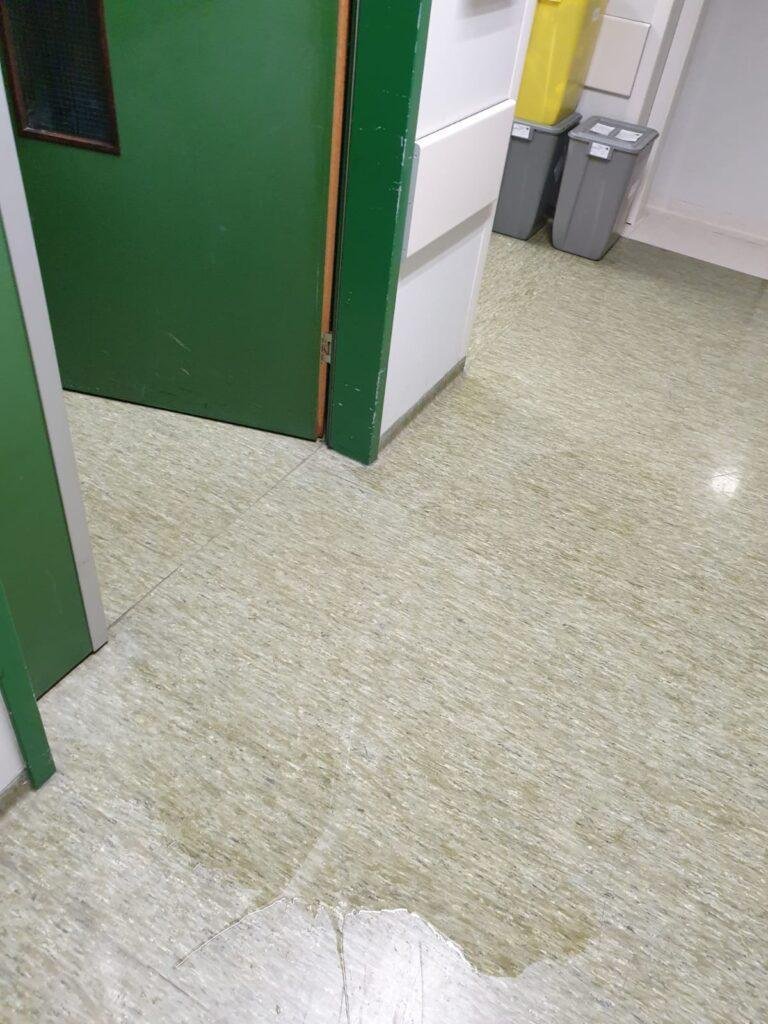
And then something happened that I did not expect to see during my science career. When I came in on a Saturday to work again together with Jayron there was something wrong in the lab… There was so little air pressure that I needed all my strength to even open the doors. And when you managed to open them, the wind swept in and all the paper went flying. So off course I called the technical department of out institute and they would come and check. But 5 minutes later I was calling them again, because Jayron had found it ‘raining’ in the cell culture facility! The roof was literally falling down because of all the water coming down from the floor above us! It turned out in a weekend of frantic calls to the technical service trying to figure out what was wrong and news that we probably were not allowed to work in the lab for an entire week because of the air system failing. But I had my super important experiment that had already started!!! And I needed to do things for that! So, there I went with my cells to another location to culture them there. While still staying in contact with the technical service and making sure the rest of our department knew what was going on. It was not a fun time.
After many many calls to figure things out we were allowed to work again in the lab after some emergency repairs. So work went on. And then when I am just about to refresh the medium of the macrophages, I get a call from Jayron. The GP is sending him to the emergency care at the hospital with his weird back pain since she is worried it might be an infection. And he is already on his way….. Well I freaked out! That was not a call I expected! Of course I immediately went with him! First we were sent to the wrong hospital so we had to go to a different one, then it turned out the first one was the correct one, then they made us wait for hours while not really knowing what was going on. In the end they sent us home late in the evening with the message to come back as soon as it took a turn for the worse… Uhhhhh it was just a back pain!?!?!?
But the next day I needed to collect the samples from the experiment that was going to make or break my paper! I decided to go in and collect them while checking if Jayron was ok every few minutes, he was fine in the end and it was a complete false alarm but I did not know that back then. After arriving at the lab and telling all my colleagues about my evening at the emergency care I started harvesting the samples.
And then I saw it, my worst nightmare: FUNGUS. First on just one plate. And then on another, and another, and another. I was stunned…. And then I was devastated. What did I do?!?! Was it something I did?? I talked to my PI, who was super nice. But in the end the inevitable conclusion was that I needed to throw It all away. I went back to my office and stared at my screen without saying anything trying to hold it together, which worked for at least five minutes… I think one of my colleagues made a joke about something completely else and I just started crying. Crying about the fungus in the plates of the experiment I was working on for already a year, about all those missed weekends, about being in the lab instead of with Jayron who might have something life threatening (he did not in the end). Did I tell you my colleagues are amazing? They supported me so well. When I got it together again I went to M to tell her what happened… and I started crying again. The buildup of all those months working on this combined with the feeling of what am I even doing here when I need to be checking on Jayron just broke me. M took me for a nice warm cup of thee somewhere where we could talk and sent me home afterwards.
Then the next day I started planning to do it all over again. Because that is the resilience you need as a Scientist. We all cry sometimes about experiments that break us. We all know how it feels and I am so lucky to have such supportive colleagues at those times. The repeat of the experiment went a lot better and in the end the results were exactly what we needed for the paper. So its going to happen! It’s not done yet of course, but after going through hell with this experiment there is nothing stopping me now!
If you ask me the most important characteristic of a PhD student is resilience. You need to be able to pick yourself up and come in the next day again resolved to make this time different. There will be months where you are just repeating experiments over and over that are failing for whatever reason.
So if you ever find yourself in a situation like this, know that it can all work out in the end.



